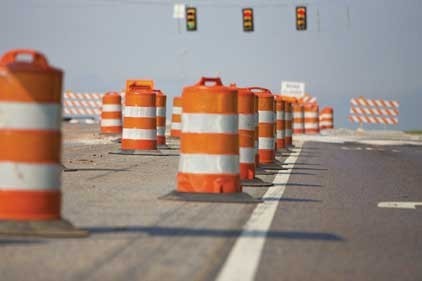Improving workplace health & safety through collaboration

Highway infrastructure workers, which include road, street, bridge, tunnel, and utility workers, are exposed to multiple hazards from outside and inside the work area. Add passing motorists, construction vehicles, and equipment to the mix and risk significantly increases for fatal and serious nonfatal injury. The common hazards found in this type of work include falls, electrical, struck-by, and caught between. According to NIOSH, more than 100 workers are killed and more than 20,000 are injured each year in the highway and street construction industry. Vehicles and equipment operating in and around the work zone are involved in more than half of the worker fatalities in this industry.
Historically, efforts to reduce vehicle-related worker injuries in this industry have focused on improving traffic control devices and work zone configurations to minimize confusion for motorists passing through the work zone and to limit collisions involving motorists.
Here are eight ways to keep your highway construction site safer for your workers:
Work zone
Understanding traffic control principles is key in the configuration of work zones. According to the National Motorist Association, close to 85 percent of highway construction zone fatalities are those of motorists and/or their passengers. To reduce injury exposure from traffic vehicles, the Federal Highway Administration has developed and maintained the Manual on Uniform Traffic Control Devices (MUTCD), which provides for uniform design and setup of highway work zones. Possible strategies include rerouting all traffic to one side of a multi-lane highway, providing alternative routes, or when feasible, complete road closure. Where worker exposure to traffic cannot be completely eliminated, use positive protective barriers to shield workers from intrusions by traffic vehicles. Examples are truck-mounted attenuators (TMAs) and temporary traffic barriers. Also, consider additional measures such as sensors, handheld radios, and intrusion alarms, but do not rely on them as a primary protection against injury.
Temporary traffic control devices
Work zones must use temporary traffic control devices for public motorists in a consistent manner. According to OSHA, construction safety standards require that traffic control signs, signals, barricades, or devices must be used to protect construction employees from traffic hazards, such as motorists inadvertently entering the work space or exiting the highway in the wrong place. Set up temporary traffic control within a reasonable time prior to construction so that motorists do not become complacent and ignore warning signs and devices when work begins.
Motorist education /speed enforcement
Make sure to provide plenty of advance warning of upcoming work zones, such as real-time information in signage and in travelers’ advisory radio broadcasts. In highly vulnerable situations that threaten worker safety, consider reducing speed incrementally. To maintain traffic flow through regulatory speed zoning, use police, funneling, lane reduction, flashing lights, or flaggers. Alternative speed control measures, such as video-taping speeding motorists, radar-gun technology, fines, and pace vehicles, can also be implemented and tested.
High-visibility apparel
All workers working on foot in a highway construction zone must be outfitted in high-visibility safety apparel, such as fluorescent garments with retro-reflective material. Also, consider landscape and foliage variations when choosing apparel colors so workers do not blend into the background.
Internal traffic control plans
In addition to the temporary traffic control plan for the public, it is important to create an internal traffic control plan for work zone managers to coordinate the flow of construction vehicles, equipment, and workers operating in close proximity within the area of activity to ensure the safety of workers. The internal traffic control plan should address the chain of command, scope of project, safety elements, and a hazard assessment of the project.
Accountability and coordination
Be sure to maintain lines of communication between individuals responsible for different aspects of work zone safety and hold supervisors accountable for daily documentation of hazards and how they are mitigated. This helps to ensure workers are aware of hazards resulting from work being done on the site. Also, hold meetings before projects start to discuss potential hazards and how such hazards can be eliminated or mitigated.
Safe equipment operation
Heavy machinery and other equipment on the work site must be operated by persons who have been trained and authorized to work on that equipment. Inspections must be performed daily by supervisors, which include making sure the necessary maintenance and repairs are performed and records are maintained.
Training and certification
Since all workers, including equipment operators and supervisors, are likely to be on foot around operating vehicles, equipment, and passing motorists, develop a training program that provides workers with an understanding of safety hazards and methods of hazard reduction in highway and street construction. OSHA mandates training for all construction workers whose actions affect work zone safety.
The two most important factors to traffic safety, more so than speed, are attentive drivers and smooth traffic flow. Their importance is heightened even more in construction zones. Work zone safety and awareness is critical, for drivers as well as for the men and women who work on our highways. Never forget: ultimately it’s everyone’s responsibility to drive safely around work zones and following the posted signage.
- b449c5b7c79e5cb9886783d6d7e62a748e.jpg
http://www.ishn.com/ext/resources/Issues/Sept-2014 ... 85664
This article has been read 1086 times.
DISCLAIMER: All contents published on this website is for informational purposes only. In as much as we encourage write-ups to be originally written by the claimed authors, we might not be able to control those who will try to copy articles from other authors/writers. In view of the above, the owner and management of Safetyhow.com will not be liable for any loses, injuries, or damages from the display or use of the contents herein. Likewise, the owner and management will not be liable for any errors or omissions in the information stated. Furthermore, we highly recommend that any form of plagiarism or libel committed as a result or implication of the articles written by any specific author in this platform be reported to us immediately so that appropriate action will be given.
